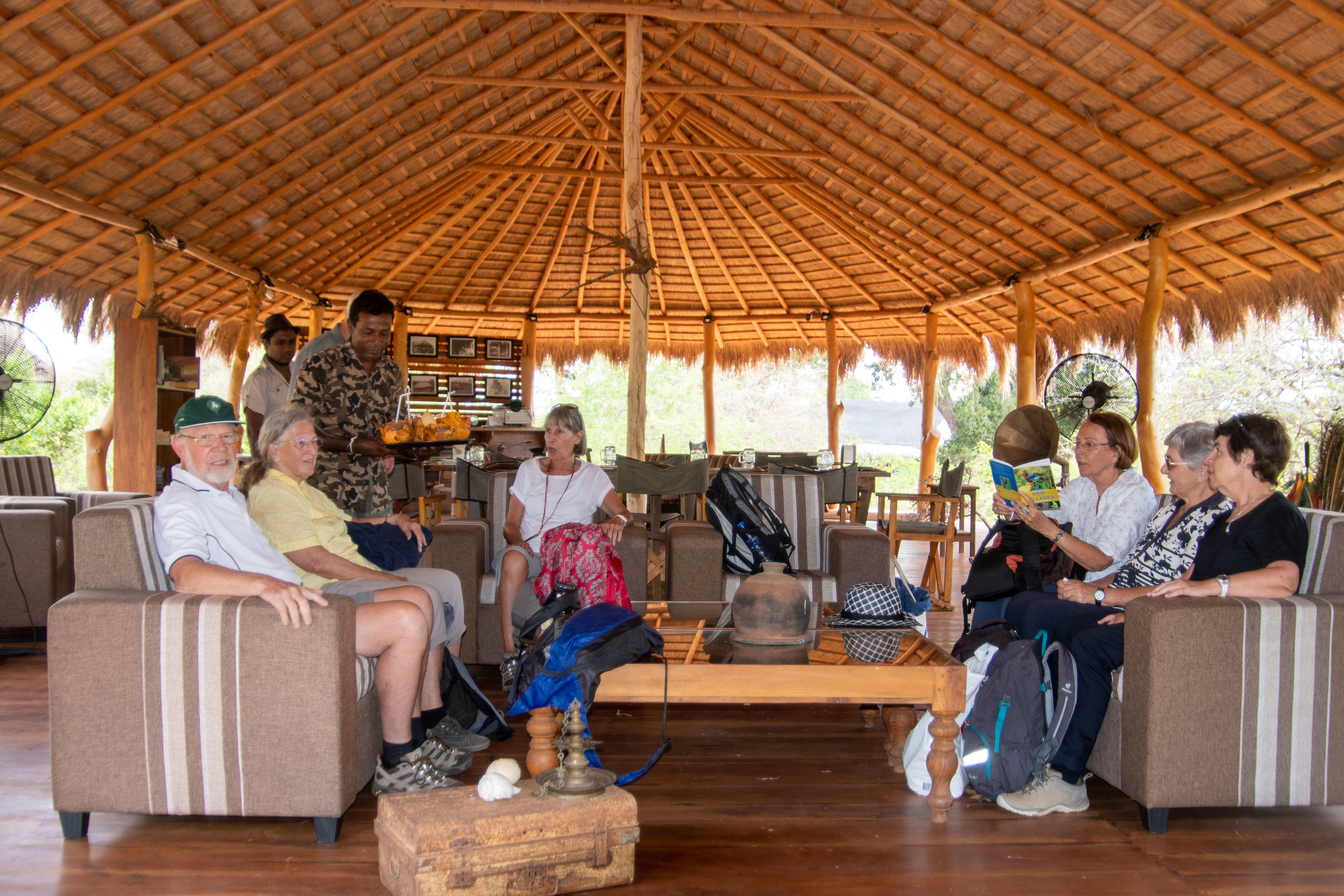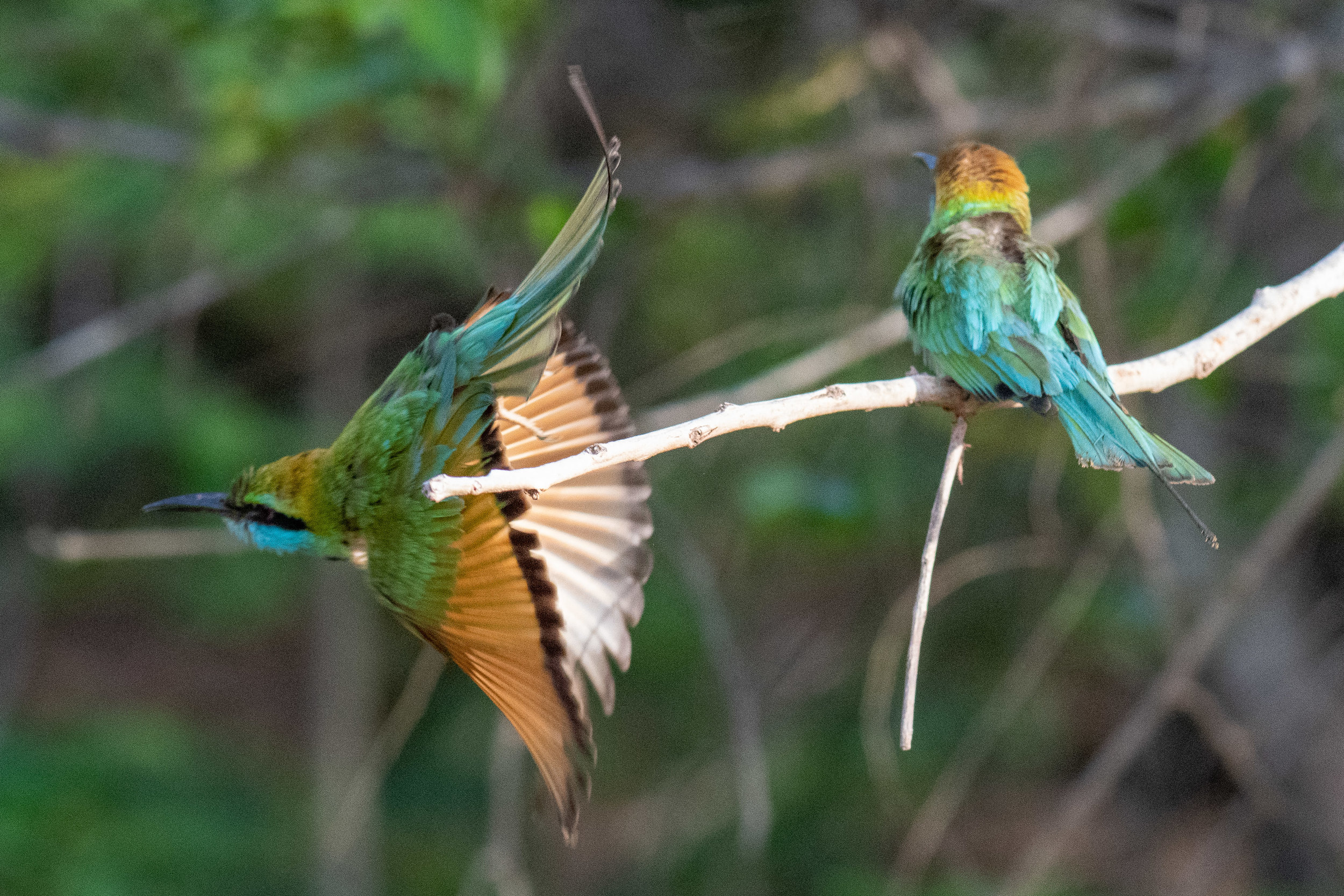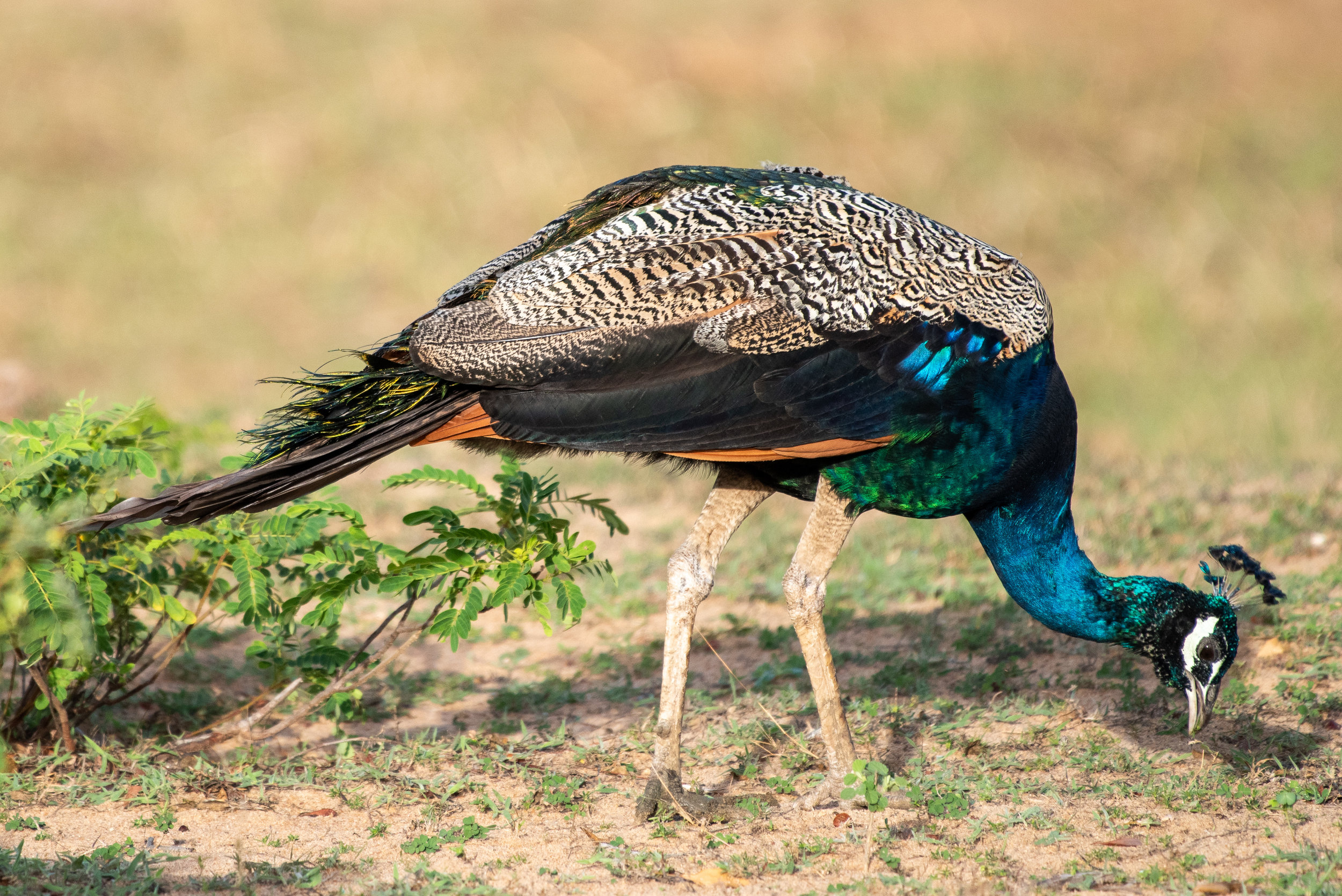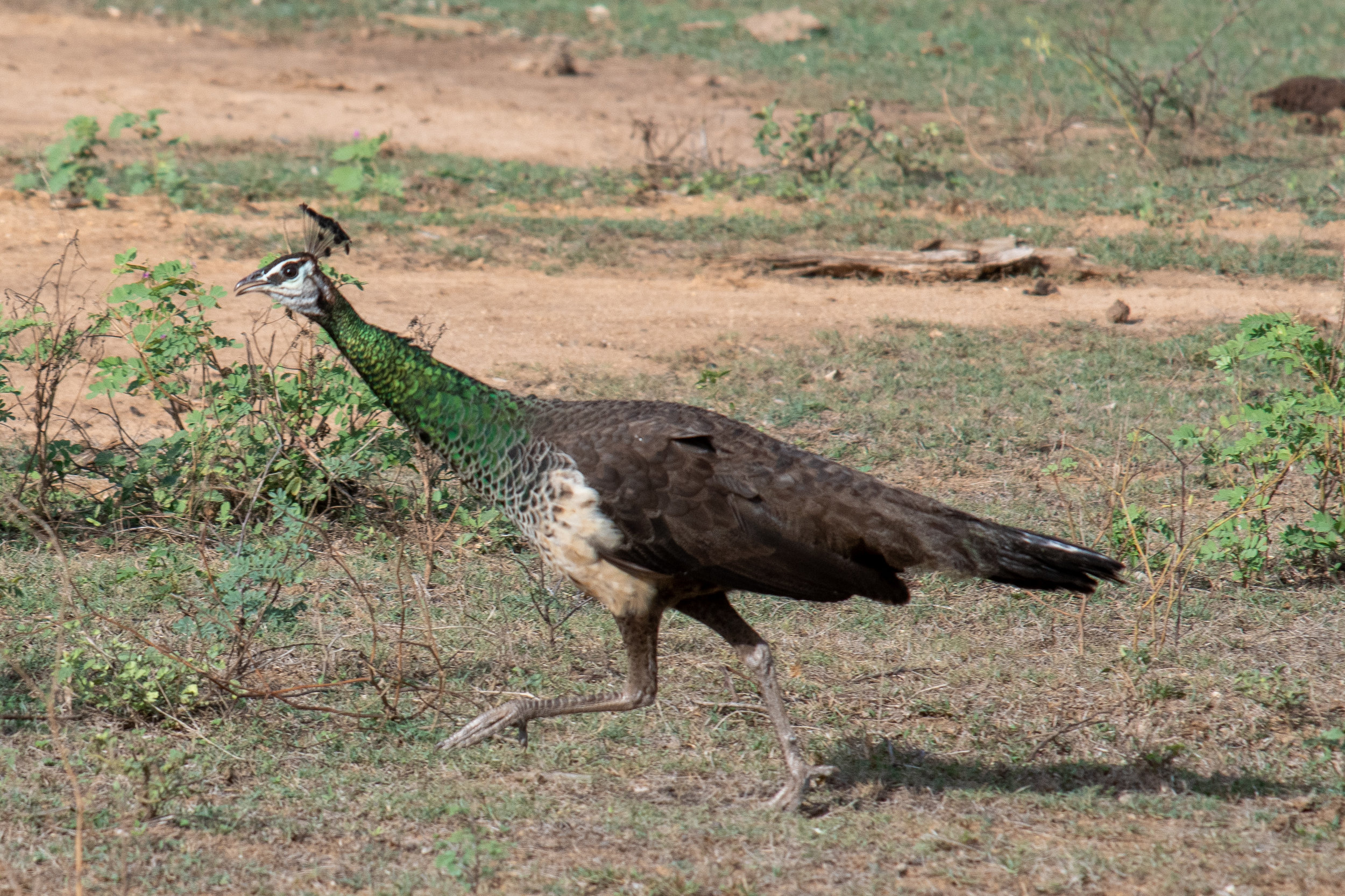We left Nuwara Eliya at 08:30 and commenced our 200 km trip south-eastwards with our mid-day destination being Yala on the coast.
The contrasts in climate and vegetation were pronounced. We departed from a mountainous region where the cool and wet weather was ideal for tea growing and vegetable farming and arrived at a coastal tropical region where rice growing, banana and coconut plantations were more the norm.
The first section of road on leaving Nuwara Eliya was a steep downhill winding road with spectacular valleys and rocky outcrops as we made our way from the plateau towards the coastal plain.
We had a brief stop at the Sriramajayam Hindu temple that was also home to a large number of macaque monkeys. At the gopuram or ceremonial gateway were burgundy coloured, tapered towers with numerous brightly coloured gold painted sculptures and intricate gargoyles depicting Hindu deity. The scene, with monkeys running everywhere was certainly intriguing and the intricacy of the sculpted gods and lions was impressive. As we were constrained by time we decided not to enter the inner section (kovil) of the temple.
Sriramajayam Temple, Nuwara Eliya
A little further down the long and winding road, near the township of Ella we came to the Ravana Falls. This impressive cascade down the side of the high rocky valley comprises four or five separate waterfalls with a combined drop of two hundred metres or so. One can only imagine the spectacle when the river is in full flow during the monsoon season.
Ravana Falls, Ella
Ravana Falls, Ella
Rock outcrop, Ravana Falls, Ella
We continued on down the A2 highway to Pannegamuwa where we diverted to Tissamaharama and then on to Kirinda. For the last thirty kilometres we travelled just in from the coastline heading north-eastwards to Yala.
At Yala we all transferred with our luggage to two safari adapted and quite senior Hilux vehicles for the final travel to our Ruhunu Safari Camp which will be our base for the next three nights.
Boarding our jeeps at Yala
View of the sea over salt ponds at turnoff to Ruhunu Yala Safari Camp
The three kilometres of ‘track’ from the coast into the camp was definitely 4WD with some sections being deeply rutted and others involving crossing rocky ridges.
The camp is within the ‘buffer’ section of the Yala West (Ruhunu) National Park and comprises a central meeting/dining building plus nearby kitchen and ten safari tents spread out over a reasonably large area giving campers a sense of wilderness isolation. The tents are basic, comfortable and appropriate for the location, but not what one would call ‘glamping’!
Arriving at Ruhunu Yala Safari Camp
Our safari tent, Yala Safari Camp
After settling into our tent we then drove in the mid-afternoon to the main entrance of the Yala West (Ruhunu) National Park and were there joined by two local guides, one per vehicle. For the next three hours we covered a large distance on sandy, bumpy tracks observing and photographing wildlife. The Ruhunu National Park covers an area of 141 square kilometres and is divided into five blocks with only the two coastal blocks being open to visitors. The landscape is punctuated by rocky outcrops and the sprawling landscape varies from thorny scrub and open grasslands to dense jungles and coastal lagoons.
One of the very common (small) birds seen during the afternoon was the little green bee-eater which is similar to, but not the same species as the African little bee-eater we know from Namibia and Botswana.
Little green bee-eater, Ruhunu Yala National Park
Little green bee-eaters, Ruhunu Yala National Park
Little green bee-eaters, Ruhunu Yala National Park
Our travel was at some points just over the dunes from the Indian Ocean and out to sea a light-house was visible on the horizon.
Ruhunu Yala National Park sign
Lighthouse viewed from Ruhunu Yala National Park
A herd of spotted deer was then encountered grazing on a grassy plain near a waterhole. The stags with their prominent antlers are easy prey if chased into the undergrowth by a leopard as stags’ antlers tend to catch in the scrubby and thorny acacias and impede their escape.
Spotted deer, Ruhunu Yala National Park
Spotted deer, Ruhunu Yala National Park
Peafowl are very common and the initial excitement of seeing peacocks with their magnificent plumage soon became rather humdrum!
Peacock, Ruhunu Yala National Park
Peacock, Ruhunu Yala National Park
Peahen, Ruhunu Yala National Park
Wild pigs are frequently seen especially around waterholes and mud-sumps. These porcine creatures are not very attractive but they are certainly better looking than warthogs.
Wild pig, Ruhunu Yala National Park
Water buffalo, Ruhunu Yala National Park
The majority of wildlife, not surprisingly was located close to waterholes. Water-buffalo, elephants and crocodiles being the three big and common attendees at the water’s edge or within the water.
Elephant, Ruhunu Yala National Park
Crocodile, Ruhunu Yala National Park
Our high hope was to encounter a leopard and in the cooler late afternoon we did locate one, albeit for a brief period. By the time the jeep stopped and backed to the spot where we’d sen the leopard, it had moved further from the road and was barely visible. No photos of the leopard of any real value were obtained unfortunately.
The Sri Lankan leopard is a sub-species endemic to the island and the Ruhunu National Park is home to about 35 leopards.
The birds similarly seem to congregate near water and the common aquatic species seen included ibis, pigeons, storks, herons, egrets, stilts, spoonbills, thick-knees and lapwings.
Malabar pied hornbill, Ruhunu Yala National Park
Orange-breasted green pigeon
The other species of deer found in Sri Lanka is the Sambhur deer and we saw these somewhat rarer deer at close range as we had on the Horton Plains earlier in the week.
Sambhur deer, Ruhunu Yala National Park
The most colourful and photogenic birds of this park are in our opinion the bee-eaters, the kingfishers and the junglefowl.
Common kingfisher, Ruhunu Yala National Park
Red-wattled lapwing, Ruhunu Yala National Park
The junglefowl is a handsome bird with the rooster having a red and yellow wattled head with body plumage being stripes of yellow, orange and navy blue. This endemic bird is the national bird of Sri Lanka.
A very large and marble coloured python crossed the road in front of us and forced a total halt in the traffic. It took about a minute for this two metre snake to cross the road; it was in no hurry!
We returned to camp at around 18:30 and had cold drinks before dinner which included a range of traditional and tasty Sri Lanka dishes although the curries were made ‘milder’ to suit our Australian palates.
Tomorrow we have a full day of safari travels with us departing camp at 06:00 so an early bedtime was needed after a full day of road and safari travel.



























